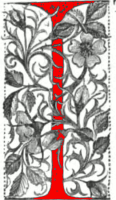
n his history of British food, Colin Spencer traces the beginnings of its disastrous decline to the sixteenth-century enclosure of public lands, which deprived peasants and the poor of a place to grown small crops and graze a single animal or two. “Parliament encouraged enclosure and cultivation of wasteland [because] it protected farmers against imports and authorized corn hoardings” 136). The unintended result, one that markedly distinguished English from European rural lower classes, was “the decline of the peasantry in Britain” (246). Next, the growth of a market economy, Spencer explains, “undermined self-sufficiency and enmeshed the village in a network of cash sales, for it was not immune to the popularity of imported foods, such as tea, coffee, and sugar” Furthermore, no longer able “to grow vegetables or keep hens” (246) many country people became cottage-based artisans who lived little better than urban factory workers.
The single most important consequence, Spencer argues, was that “there were now no ingredients for the soup or pottage flavoured with wild greens, thickened with dried peas or beans and if they were lucky a bacon hock bone to give added lustre and flavour.” Spencer quotes Eliza Acton (born 1799), who “notices that the making of soup seems to have entirely disappeared: ‘The art of preparing good, wholesome, palatable soups, without great expense, which is so well understood in France, and in other countries where they form part of the daily food of all classes of the people, has hitherto been very much neglected in England” (246). It turns out to be a lot more important than knowing how to make soup: first all, the enclosures, loss of peasant gardens, and dependence upon grain, whether imported or native-grown, led to both the disappearance of vegetables from the English diet and the loss of peasant cooking that grounded and enriched the recipes of the wealthy. Looking at Mr. Beeton’s famous cookbook, which became the Bible of English cooking, Spencer notes that it devotes 200 pages to meat, 100 to poultry, and 50 to vegetables. Mrs. Beeton's cookbook of course has little relevance to the poor and the very poor, none of who could have afforded any of the ingredients in her recipes.
The urban poor had, for example, fish and chips. According to Spencer, “one of the earliest references to fried fish itself is made in Oliver Twist, first published in serial form between 1837 and 1838, where a fried fish warehouse is mentioned.” Originally, “fried fish was sold with a slice of bread and it was hawked around the London pubs, the cry of the seller being ‘fish and bread, a penny’. . . Mayhew talks of fish-frying areas around Bishopsgate, the Inns of the Court and near London Bridge, where Jews often plied the trade. [264]
For those who couldn't afford fish, “Chip shops which only fried potatoes also existed; they were associated with slums and poverty, and were often run by widows in their front rooms, with an old boiler filled with rank lard set up on a block of bricks, with a small coal fire underneath. . . .In the latter part of the century, the greatest density of chip shops was in the industrial districts of Lancashire and Yorkshire between Oldham and Bradford, and it is thought it was in this area that the marriage of the chip with a piece of fried fish occurred. When exactly this was no one seems to know” (264).
Links to Related Material
- Colin Spencer Explains Why Was Victorian Cooking so Bad
- Transportation Technology, Milk, and Disease
Bibliography
Broomfield, Andrea. Food and Cooking in Victorian England: A History. Westport, CT: Praeger, 2007.
Eating with the Victorians. Ed. C. Anne Wilson. Sutton, 2004.
Spencer, Colin. British Food: An Extraordinary Thousand Years of History. New Yoek: Columbia University Press, 2002.
Wohl, Anthony S. Endangered Lives: Public Health in Victorian Britain. Cambridge: Harvard UP, 1983. pp. 48-49, 50-51.

Last Modified 24 June 2022